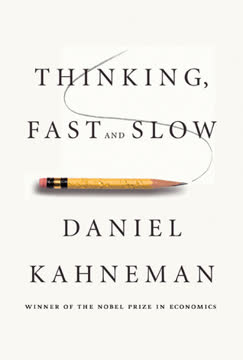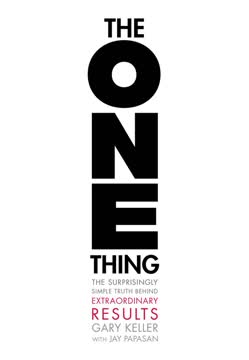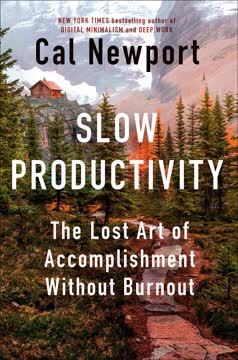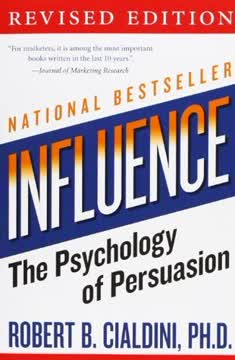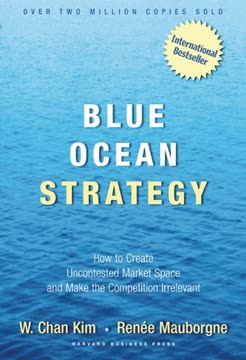मुख्य निष्कर्ष
1. पुराना मस्तिष्क: असली निर्णयकर्ता
पुराना मस्तिष्क नाम के अनुसार ही है, क्योंकि यह लगभग 450 मिलियन साल पुराना है।
तीन भागों वाला मस्तिष्क। मानव मस्तिष्क तीन अलग-अलग हिस्सों से बना है: नया मस्तिष्क (नियोकोर्टेक्स), मध्य मस्तिष्क (लिंबिक सिस्टम), और पुराना मस्तिष्क (रेप्टिलियन मस्तिष्क)। जहाँ नया मस्तिष्क तर्कसंगत जानकारी को संसाधित करता है और मध्य मस्तिष्क भावनाओं को संभालता है, वहीं निर्णय लेने का अंतिम अधिकार पुराना मस्तिष्क रखता है। यह मस्तिष्क का वह प्राचीन हिस्सा है जो जीवित रहने की प्रवृत्तियों और त्वरित निर्णय लेने के लिए जिम्मेदार है।
विकास और निर्णय लेना। निर्णय लेने में पुराना मस्तिष्क सबसे आगे है क्योंकि इसका विकास बहुत पुराना है। यह स्वयं की सुरक्षा पर केंद्रित रहता है और दृश्य संकेतों, विरोधाभासों और ठोस इनपुट पर तीव्र प्रतिक्रिया देता है। इसे समझना बिक्री और विपणन रणनीतियों में क्रांतिकारी बदलाव ला सकता है, क्योंकि यह केवल तर्कसंगत तर्कों से हटकर उन तकनीकों पर ध्यान केंद्रित करता है जो इस प्राचीन निर्णयकर्ता से सीधे जुड़ती हैं।
संचार के लिए निहितार्थ। प्रभावी निर्णय प्रभावित करने के लिए संदेशों को पुराना मस्तिष्क तक पहुँचाने के लिए अनुकूलित करना आवश्यक है। इसका मतलब है कि केवल शब्दों तक सीमित न रहना, क्योंकि इस प्राचीन संरचना पर शब्दों का प्रभाव सीमित होता है, बल्कि दृश्य, भावनात्मक और ठोस तत्वों को शामिल करना जो सीधे निर्णय केंद्र से संवाद करें।
2. छह उत्तेजनाएँ जो पुराना मस्तिष्क समझता है
पुराना मस्तिष्क स्वयं से जुड़ी हर चीज़ पर प्रतिक्रिया करता है।
- स्व-केंद्रितता: पुराना मस्तिष्क स्वयं की सुरक्षा और व्यक्तिगत प्रासंगिकता को प्राथमिकता देता है।
- विरोधाभास: स्पष्ट भेद पुराना मस्तिष्क को त्वरित निर्णय लेने में मदद करते हैं।
- ठोस इनपुट: अमूर्त विचारों की तुलना में ठोस अवधारणाएँ पसंद करता है।
- शुरुआत और अंत: जानकारी की शुरुआत और अंत सबसे प्रभावशाली होती है।
- दृश्य उत्तेजना: पुराना मस्तिष्क शब्दों की तुलना में छवियों को तेज़ी से संसाधित करता है।
- भावना: तीव्र भावनाएँ स्मृति और निर्णय को मजबूत करती हैं।
उत्तेजनाओं का प्रयोग। प्रभावी संचार रणनीतियों में इन छह तत्वों को शामिल करना चाहिए ताकि वे पुराना मस्तिष्क से जुड़ सकें। उदाहरण के लिए, पहले और बाद के परिदृश्य विरोधाभास पैदा करते हैं, जबकि जीवंत छवियाँ पुराना मस्तिष्क की दृश्य प्रसंस्करण क्षमता को सक्रिय करती हैं। भावनात्मक कहानी कहने से संदेश अधिक यादगार और प्रभावशाली बनते हैं।
संदेशों को अनुकूलित करना। जब कोई उत्पाद या विचार व्यक्ति के लिए कैसे लाभकारी है (स्व-केंद्रितता) और ठोस उदाहरण (ठोस इनपुट) के साथ प्रस्तुत किया जाता है, तो विपणक ऐसे संदेश बना सकते हैं जो पुराना मस्तिष्क जल्दी और सकारात्मक प्रतिक्रिया देता है।
3. पुराना मस्तिष्क को बेचने के चार कदम
दर्द, दावे, लाभ, पुराना मस्तिष्क!
- दर्द की पहचान करें: संभावित ग्राहक की मुख्य समस्याओं या आवश्यकताओं को समझें और स्पष्ट करें।
- अपने दावों को अलग करें: बताएं कि आपकी समाधान क्या खास बनाती है।
- लाभ दिखाएँ: लाभों का ठोस प्रमाण प्रस्तुत करें।
- पुराना मस्तिष्क तक पहुँचाएँ: ऐसी तकनीकों का उपयोग करें जो सीधे निर्णयकर्ता से संवाद करें।
दर्द-केंद्रित दृष्टिकोण। संभावित ग्राहक के दर्द बिंदुओं की गहन पहचान से आप अपने संदेश को उनकी सबसे महत्वपूर्ण चिंताओं के साथ जोड़ते हैं। इससे तुरंत प्रासंगिकता बनती है और पुराना मस्तिष्क ध्यान देता है।
प्रमाण और प्रस्तुति। दावों के बाद, ठोस सबूत के माध्यम से लाभ दिखाना आवश्यक है। इसमें ग्राहक की प्रशंसापत्र, प्रदर्शन या प्रभावशाली आंकड़े शामिल हो सकते हैं। अंतिम चरण में इस जानकारी को ऐसे तरीके से प्रस्तुत करना होता है जो पुराना मस्तिष्क समझ सके, जिसमें दृश्य, भावनात्मक और विरोधाभास से भरपूर तकनीकों का उपयोग हो।
4. ध्यान आकर्षित करने वाले तत्व: तुरंत ध्यान खींचना
यदि आप पहले ही क्षण में किसी दृश्य आश्चर्य से ध्यान खींच लेते हैं, तो दर्शक को बनाए रखने की संभावना बढ़ जाती है।
ध्यान आकर्षित करने के प्रकार:
- छोटे नाटकों
- शब्दों के खेल
- प्रश्न जो सोचने पर मजबूर करें
- सहायक वस्तुएं
- कहानियाँ
पहली छाप का महत्व। पुराना मस्तिष्क बातचीत की शुरुआत में सबसे सतर्क होता है, इसलिए शुरुआती क्षणों में ध्यान खींचना बेहद जरूरी है। एक मजबूत ध्यान आकर्षक पूरे प्रस्तुति या संदेश के लिए माहौल सेट कर सकता है।
प्रभावी ध्यान आकर्षक बनाना। सबसे अच्छे ध्यान आकर्षक अप्रत्याशित, भावनात्मक रूप से जुड़े हुए और दर्शक के दर्द बिंदुओं से सीधे संबंधित होते हैं। उदाहरण के लिए, एक छोटा नाटक जो संभावित ग्राहक की समस्या को जीवंत रूप में दिखाता है, तुरंत उनकी रुचि जगा सकता है और आपके समाधान के लिए एक ग्रहणशील मनोदशा बना सकता है। सहायक वस्तुएं और कहानियाँ अमूर्त अवधारणाओं को ठोस बनाकर पुराना मस्तिष्क की पसंद के अनुरूप बनाती हैं।
5. दृश्य संचार की शक्ति
एक तस्वीर हजार शब्दों के बराबर होती है।
दृश्य प्रसंस्करण की गति। पुराना मस्तिष्क दृश्य जानकारी को श्रवणीय जानकारी की तुलना में 40 गुना तेज़ी से संसाधित करता है। इसलिए दृश्य संचार निर्णय लेने वाले केंद्र तक जल्दी और प्रभावी ढंग से पहुँचने का एक शक्तिशाली माध्यम है।
बड़ी तस्वीर की अवधारणा। "बड़ी तस्वीर" बनाना — यानी यह दिखाना कि आपका समाधान संभावित ग्राहक की दुनिया को कैसे प्रभावित करता है — समझ और स्मृति को काफी बढ़ा सकता है। प्रभावी बड़ी तस्वीरें:
- संभावित ग्राहक की दुनिया को दर्शाती हैं, केवल आपके उत्पाद को नहीं
- वास्तविक दृश्य उपयोग करती हैं, केवल आरेख या पाठ नहीं
- अक्सर पहले और बाद के परिदृश्यों में विरोधाभास दिखाती हैं
दृश्यों को शामिल करना। प्रस्तुतियों, विपणन सामग्री और बातचीत में अवधारणाओं को दृश्य रूप में प्रस्तुत करने के तरीके खोजें। यह सहायक वस्तुओं का उपयोग, कहानी कहने के माध्यम से जीवंत मानसिक छवियाँ बनाना, या प्रभावशाली दृश्य सहायता हो सकती है जो सीधे दर्शक के दर्द और लाभ को दर्शाती हैं।
6. प्रभावशाली दावे और प्रमाण बनाना
कीमत वह है जो आप चुकाते हैं। मूल्य वह है जो आप पाते हैं।
प्रभावी दावे:
- संक्षिप्त और यादगार
- संभावित ग्राहक के दर्द से संबंधित
- आपके समाधान के लिए अनूठे
प्रमाण की श्रेणी:
- ग्राहक कहानियाँ (80-100% प्रमाण)
- प्रदर्शन (60-100% प्रमाण)
- आंकड़े (20-60% प्रमाण)
- दृष्टि (10-40% प्रमाण)
दावों और प्रमाण का संतुलन। मजबूत दावे ध्यान आकर्षित करते हैं, लेकिन उन्हें पुराना मस्तिष्क मनाने के लिए ठोस सबूतों से समर्थित होना चाहिए। ग्राहक कहानियाँ विशेष रूप से प्रभावशाली होती हैं क्योंकि वे आपके समाधान की प्रभावशीलता का ठोस, संबंधित प्रमाण देती हैं। संदेश बनाते समय, हर दावे के लिए कम से कम एक मजबूत प्रमाण होना चाहिए, जो प्रमाण श्रेणी के उच्च स्तर से हो।
7. भावना और कहानियों के माध्यम से प्रभाव बढ़ाना
पुराना मस्तिष्क वास्तविकता और अच्छी कहानी में फर्क नहीं कर पाता।
भावनात्मक स्मृति। तीव्र भावनाएँ स्मृति को मजबूत करती हैं, जिससे यादें जीवंत और स्थायी बनती हैं। इसलिए लोग वर्षों बाद भी याद रख पाते हैं कि वे महत्वपूर्ण भावनात्मक घटनाओं के दौरान कहाँ थे।
कहानी कहने की शक्ति। कहानियाँ पुराना मस्तिष्क तक पहुँचने में विशेष रूप से प्रभावी होती हैं क्योंकि वे:
- इंद्रिय अनुभवों की दुनिया बनाती हैं
- कई सीखने के चैनलों (दृश्य, श्रवणीय, संवेदी) को जोड़ती हैं
- भावनाओं को जगाती हैं जो स्मृति और निर्णय को बेहतर बनाती हैं
- अमूर्त अवधारणाओं को ठोस और संबंधित बनाती हैं
प्रभावशाली कहानियाँ बनाना। कहानी कहने के प्रभाव को अधिकतम करने के लिए:
- इसे व्यक्तिगत और दर्शक के लिए प्रासंगिक बनाएं
- संवेदी विवरण शामिल करें ताकि अनुभव जीवंत हो
- एक स्पष्ट संदेश या सीख हो जो मुख्य विचार से जुड़ी हो
- प्रस्तुति का अभ्यास करें ताकि विश्वसनीयता और भावनात्मक प्रभाव बढ़े
8. विभिन्न सीखने की शैलियों को संबोधित करना
अपनी प्रस्तुति को अधिक दृश्यात्मक और संवेदी बनाएं।
तीन सीखने के चैनल:
- दृश्य (40% लोग)
- श्रवणीय (20% लोग)
- संवेदी/स्पर्शात्मक (40% लोग)
संतुलित संचार। अधिकांश व्यावसायिक प्रस्तुतियाँ मुख्यतः श्रवणीय चैनल पर निर्भर होती हैं, जिससे दर्शकों के एक बड़े हिस्से तक पहुँचना मुश्किल हो जाता है। सभी प्रकार के शिक्षार्थियों तक पहुँचने के लिए:
- मजबूत दृश्य शामिल करें (केवल टेक्स्ट-भारी स्लाइड नहीं)
- संवेदी आकर्षण के लिए सहायक वस्तुओं या प्रदर्शन का उपयोग करें
- सभी इंद्रियों को जोड़ने वाली कहानियाँ सुनाएं
- भाषा में दृश्य, श्रवणीय और संवेदी शब्दों का मिश्रण करें
स्मृति बढ़ाना। सभी सीखने की शैलियों को संबोधित करके, आप अपने संदेश को समझने, याद रखने और उस पर कार्रवाई करने की संभावना बढ़ाते हैं। यह बहु-चैनल दृष्टिकोण पुराना मस्तिष्क को संचार के दौरान सक्रिय बनाए रखता है।
9. आपत्तियों को संभालने की कला
आपत्ति अस्वीकृति नहीं है; यह केवल अधिक जानकारी की मांग है।
दो प्रकार की आपत्तियाँ:
- गलतफहमियाँ
- वैध आपत्तियाँ
गलतफहमियों को संभालना:
- आपत्ति को दोहराएं
- आपत्ति की ओर कदम बढ़ाएं (व्यक्ति के करीब जाएं)
- संभावित ग्राहक की बात सुनें
- प्रमाण प्रस्तुत करें
वैध आपत्तियों का समाधान:
- आपत्ति को दोहराएं
- आपत्ति की ओर कदम बढ़ाएं
- प्रतिक्रिया का इंतजार करें
- अपनी व्यक्तिगत राय बताएं
- आपत्ति के सकारात्मक पक्ष को प्रस्तुत करें
पुनः फ्रेमिंग तकनीक। वैध आपत्तियों के लिए, अक्सर मुद्दे को नए नजरिए से प्रस्तुत करना जरूरी होता है, जो पुराना मस्तिष्क के निर्णय प्रक्रिया से मेल खाता हो। उदाहरण के लिए, यदि कीमत आपत्ति है, तो इसे मूल्य या दीर्घकालिक बचत के संदर्भ में पुनः प्रस्तुत करें। कहानियाँ या उपमाएँ इस पुनः फ्रेमिंग में विशेष रूप से प्रभावी होती हैं क्योंकि वे ठोस, संबंधित जानकारी के लिए पुराना मस्तिष्क की पसंद को सक्रिय करती हैं।
10. पुराना मस्तिष्क के लिए बंद करने की तकनीकें
अपने दावों को दोहराएं और फिर सकारात्मक सार्वजनिक प्रतिक्रिया लेकर बंद करें।
प्रभावी बंद करने के कदम:
- अपने दावों को अंतिम बार दोहराएं
- सकारात्मक सार्वजनिक प्रतिक्रिया मांगें: "आपका क्या विचार है?"
- अगला कदम पूछें: "अब हम कहाँ से शुरू करें?"
संगति का नियम। जब लोग एक छोटा प्रतिबद्धता करते हैं (जैसे सकारात्मक प्रतिक्रिया देना), तो वे बाद में बड़े प्रतिबद्धताओं को पूरा करने की अधिक संभावना रखते हैं। यह मनोवैज्ञानिक सिद्धांत "आपका क्या विचार है?" प्रश्न को विशेष रूप से प्रभावशाली बनाता है।
संभावित ग्राहक की प्रतिबद्धता को अनुमति देना। खुले प्रश्न पूछकर आप संभावित ग्राहक को भविष्य के कदम सुझाने और प्रतिबद्ध होने का अवसर देते हैं। यह प्रतिबद्धता आपके द्वारा सुझाए गए कदमों से अधिक प्रभावशाली होती है, क्योंकि यह पुराना मस्तिष्क की स्व-केंद्रित प्रकृति और संगति के नियम को सक्रिय करती है।
11. कम में अधिक: अपने संदेश को सरल बनाना
बताना बिक्री नहीं है।
केन्द्रित संदेश। सभी संभावित लाभों को प्रस्तुत करने के बजाय, उन शीर्ष एक से तीन पर ध्यान दें जो संभावित ग्राहक के मुख्य दर्द बिंदुओं को संबोधित करते हैं। पुराना मस्तिष्क सरलता और स्पष्ट विकल्प पसंद करता है।
गुणवत्ता पर मात्रा। ऐसी कोई भी जानकारी हटाएं जो निर्णय प्रक्रिया में सीधे योगदान नहीं देती। खुद से पूछें:
- क्या यह जानकारी बड़ी तस्वीर को समझने के लिए आवश्यक है?
- क्या यह मेरे संभावित ग्राहक को खरीद निर्णय लेने में मदद करेगी?
- क्या यह "तो क्या?" परीक्षण पास करती है?
सरलीकरण का प्रभाव। अपने संदेश को संक्षिप्त करके:
- आप अपने दर्शकों के समय का सम्मान करते हैं
- आपके मुख्य बिंदु अधिक यादगार बनते हैं
- मूल्यवान चर्चा और प्रतिक्रिया के लिए जगह बनती है
- आप अपने मुख्य मूल्य प्रस्ताव में आत्मविश्वास दिखाते हैं
याद रखें, उद्देश्य केवल जानकारी देना नहीं बल्कि बिक्री करना है। आवश्यक बातों पर ध्यान केंद्रित करके और उन्हें ऐसे तरीके से प्रस्तुत करके जो पुराना मस्तिष्क से जुड़ते हैं, आप निर्णयों को प्रभावित करने और सौदे सफलतापूर्वक बंद करने की अपनी संभावना बढ़ाते हैं।
अंतिम अपडेट:
FAQ
What's "Neuromarketing: Understanding the Buy Buttons in Your Customer's Brain" about?
- Exploration of Neuromarketing: The book delves into the concept of neuromarketing, which combines neuroscience with marketing to understand how consumers make buying decisions.
- Focus on the Old Brain: It emphasizes the role of the "old brain" or "reptilian brain" in decision-making, which is more influential than the rational "new brain."
- Sales and Marketing Techniques: The authors provide a framework for creating marketing messages that effectively target the old brain to increase sales effectiveness.
- Practical Applications: The book offers practical advice and methodologies for sales and marketing professionals to apply neuromarketing principles in their strategies.
Why should I read "Neuromarketing: Understanding the Buy Buttons in Your Customer's Brain"?
- Innovative Approach: It introduces a novel approach to marketing that leverages the latest findings in neuroscience.
- Improved Sales Effectiveness: By understanding the decision-making process, readers can enhance their ability to influence and persuade customers.
- Comprehensive Framework: The book provides a structured methodology that can be applied across various marketing and sales scenarios.
- Real-World Examples: It includes numerous examples and case studies that illustrate the application of neuromarketing principles in real business contexts.
What are the key takeaways of "Neuromarketing: Understanding the Buy Buttons in Your Customer's Brain"?
- Three Brains Concept: The book explains the interaction between the old brain, middle brain, and new brain, highlighting the old brain's role in decision-making.
- Six Stimuli for the Old Brain: It identifies six stimuli that effectively communicate with the old brain: self-centeredness, contrast, tangible input, beginning and end, visual stimuli, and emotion.
- Four-Step Methodology: The authors propose a four-step process: Diagnose the Pain, Differentiate Your Claims, Demonstrate the Gain, and Deliver to the Old Brain.
- Impact Boosters: The book outlines seven impact boosters to enhance message delivery, including using "you" language, credibility, contrast, and emotion.
How does the "Three Brains, One Decision-Maker" concept work in the book?
- Three Distinct Parts: The brain is divided into the new brain (rational thinking), middle brain (emotions), and old brain (decision-making).
- Old Brain's Dominance: The old brain is the primary decision-maker, often overriding the rational new brain in decision-making processes.
- Survival Focus: The old brain is concerned with survival and is self-centered, making it crucial to address its needs in marketing messages.
- Interaction with Other Brains: While the old brain makes the final decision, it considers input from the new and middle brains.
What are the "Six Stimuli that Speak to the Old Brain" according to the book?
- Self-Centeredness: The old brain is focused on self-preservation and responds to messages that directly relate to its own well-being.
- Contrast: It is sensitive to clear contrasts, such as before/after scenarios, which help it make quick decisions.
- Tangible Input: The old brain prefers concrete, simple information over abstract concepts.
- Visual Stimuli: Visual input is processed faster than auditory input, making it a powerful tool for influencing the old brain.
Can you explain the "Four Steps to Success" methodology in the book?
- Step 1 - Diagnose the Pain: Identify and understand the primary pain points of your prospects to tailor your message effectively.
- Step 2 - Differentiate Your Claims: Highlight what makes your product or service unique and how it addresses the identified pain.
- Step 3 - Demonstrate the Gain: Provide tangible proof of the benefits and value your solution offers to the prospect.
- Step 4 - Deliver to the Old Brain: Use the six stimuli to craft messages that resonate with the old brain, ensuring maximum impact.
What are some practical applications of neuromarketing from the book?
- Sales Presentations: Use the four-step methodology to structure sales presentations that effectively address the old brain's needs.
- Advertising Strategies: Design ads that incorporate visual stimuli and contrast to capture the old brain's attention.
- Customer Engagement: Craft marketing messages that focus on the customer's pain and demonstrate clear, tangible benefits.
- Product Positioning: Differentiate products by emphasizing unique claims that align with the old brain's decision-making criteria.
How does the book suggest handling objections in sales?
- Misunderstandings vs. Valid Objections: Differentiate between objections based on misunderstandings and those that are valid concerns.
- Restate and Address: Restate the objection to ensure understanding, then address it with tangible proof or reframing.
- Use of Stories: Employ stories, analogies, or metaphors to reframe objections and highlight the positive aspects of the objection.
- Body Language: Maintain positive body language, such as moving toward the objector, to convey confidence and openness.
What are the "Seven Impact Boosters" mentioned in the book?
- Wording with "You": Personalize messages by using "you" to make them more relevant to the prospect.
- Credibility: Build trust through creativity, fearlessness, passion, integrity, similarity, and expressiveness.
- Contrast: Use sharp contrasts to help the old brain make decisions quickly and easily.
- Emotion: Generate emotions to create lasting memories and influence decision-making.
What are some of the best quotes from "Neuromarketing: Understanding the Buy Buttons in Your Customer's Brain" and what do they mean?
- "The old brain decides." This quote emphasizes the old brain's role as the primary decision-maker, highlighting the importance of targeting it in marketing.
- "We are not thinking machines that feel, we are feeling machines that think." This underscores the significance of emotions in decision-making, suggesting that emotions often drive rational thought.
- "No emotion, no decision." This quote reinforces the idea that emotions are crucial for triggering decisions, aligning with the book's focus on emotional marketing.
- "Less is more." This principle advocates for simplicity in messaging, ensuring that only essential information is communicated to the old brain.
How can "Neuromarketing: Understanding the Buy Buttons in Your Customer's Brain" help bridge the gap between sales and marketing?
- Common Language: The book provides a unified framework that both sales and marketing teams can use to align their strategies.
- Focus on Pain and Gain: By concentrating on diagnosing pain and demonstrating gain, both departments can work towards common goals.
- Shared Methodology: The four-step process offers a structured approach that can be applied across sales and marketing efforts.
- Enhanced Collaboration: Neuromarketing principles encourage collaboration between sales and marketing to create cohesive, effective messages.
What are some real-world examples of neuromarketing applications from the book?
- Domino's Pizza: The company identified customer pain related to delivery time anxiety and created the "Thirty minutes or less" guarantee.
- Avis Car Rental: Avis differentiated itself with the "We Try Harder" slogan, emphasizing superior service despite being second in market share.
- Panasonic Toughbook: A mini-drama ad demonstrated the durability of their laptops by depicting a dramatic drop scenario.
- Linux Presentation: A live demonstration contrasted the reliability of Linux with competitors, creating a memorable emotional experience for the audience.
समीक्षाएं
न्यूरोमार्केटिंग को लेकर मिली-जुली प्रतिक्रियाएँ सामने आई हैं। कुछ पाठक इसे उपभोक्ता मनोविज्ञान को समझने और बिक्री तकनीकों को बेहतर बनाने के लिए उपयोगी मानते हैं। वहीं, कुछ आलोचक इसे पुराना और केवल बिक्री पर केंद्रित बताते हैं, साथ ही इसे न्यूरोसाइंस के दृष्टिकोण से गहराईहीन भी कहते हैं। सकारात्मक समीक्षाएँ इसकी व्यावहारिक सलाह और निर्णय लेने में मस्तिष्क की कार्यप्रणाली को सरल भाषा में समझाने की क्षमता की प्रशंसा करती हैं। दूसरी ओर, आलोचक इसे अनुभवी विपणक के लिए बहुत ही बुनियादी बताते हैं और न्यूरोमार्केटिंग के मूल विषय पर खरा नहीं उतरने का आरोप लगाते हैं। इस पुस्तक का मूल्य पाठक की पृष्ठभूमि और अपेक्षाओं पर निर्भर करता प्रतीत होता है; कुछ इसे एक उपयोगी परिचय के रूप में देखते हैं, जबकि अन्य इससे अधिक उन्नत सामग्री की उम्मीद करते हैं।
Similar Books
